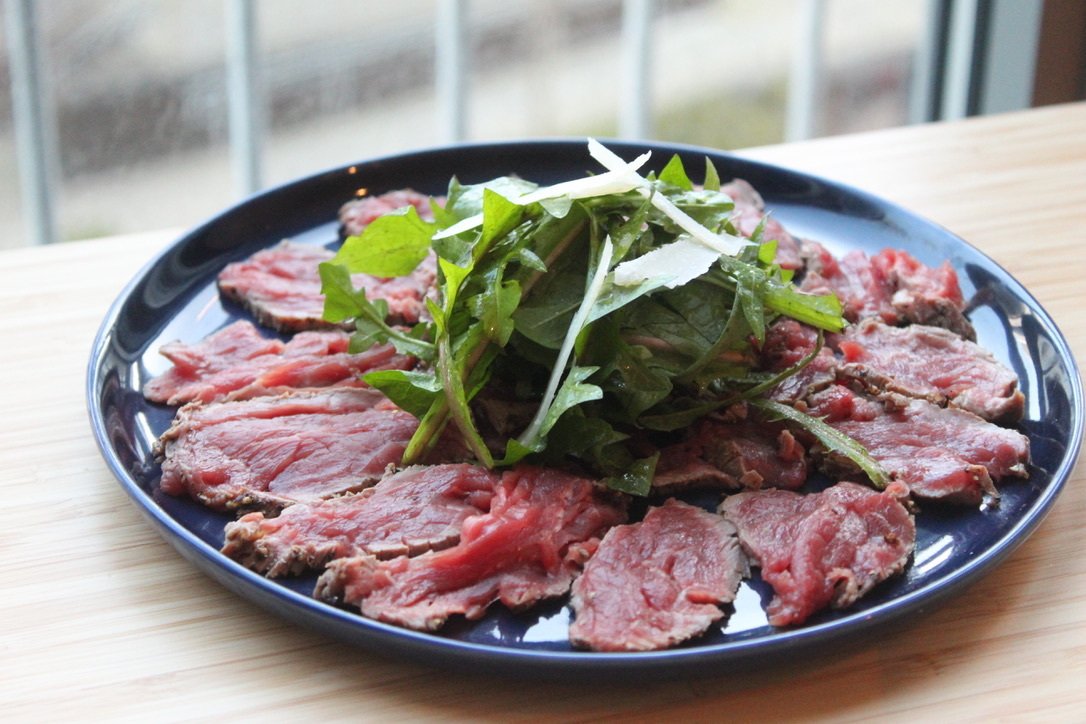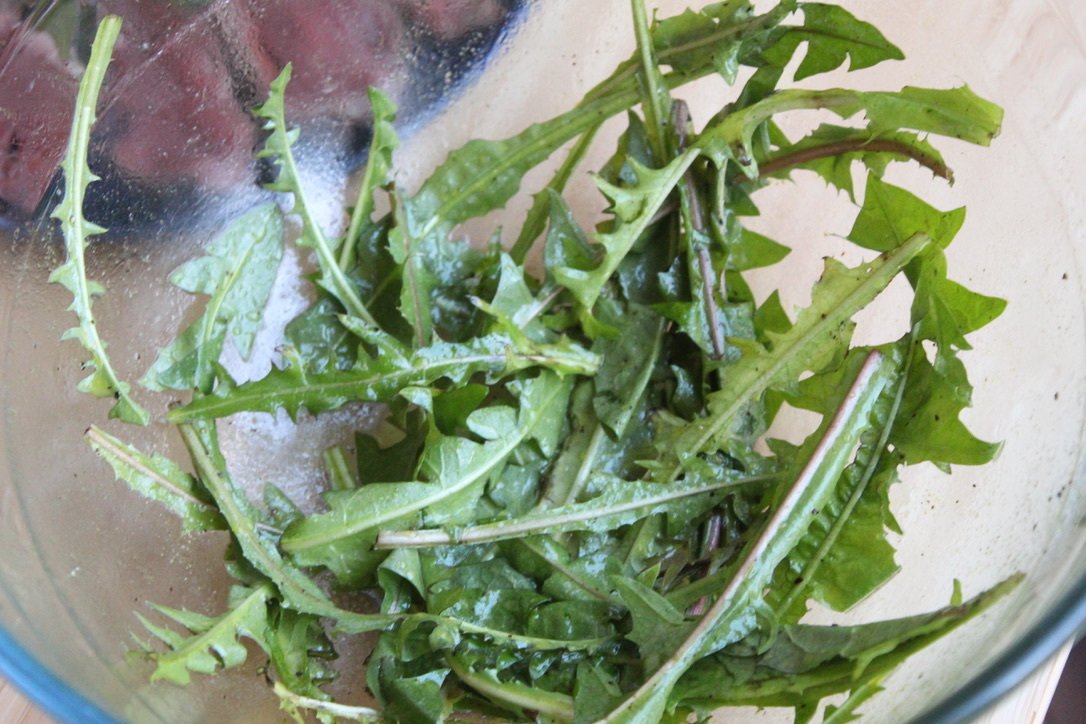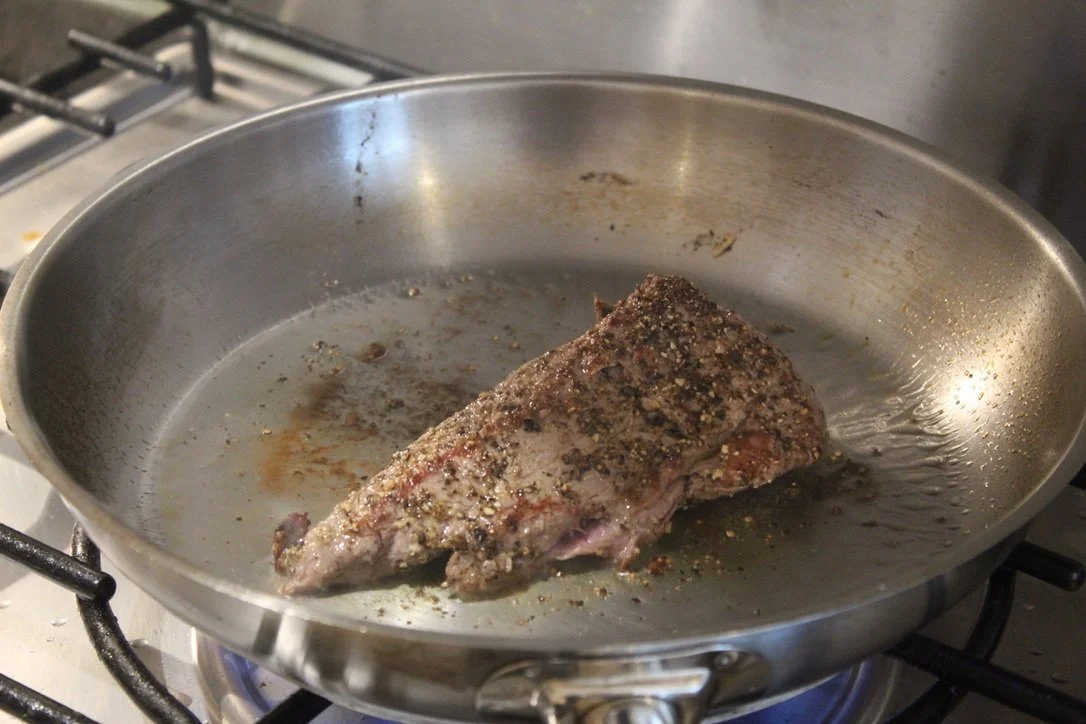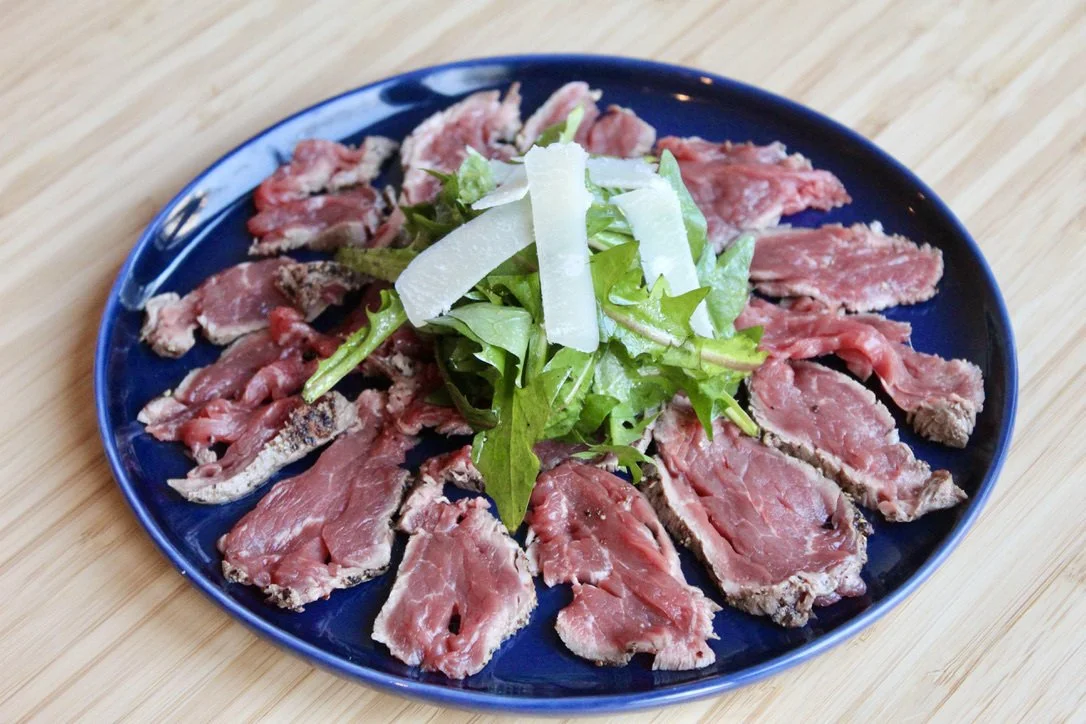Beef Carpaccio with Dandelion Salad Recipe
Discover > Texas Recipes > Beef Carpaccio with Dandelion Salad Recipe
Dandelions are by far the most underrated weed of all time. The Texas Dandelion can be found in backyards all over the Lone Star State from March to May! The entire plant, from its petals to its roots, has an exceptional range of applications, being used for food, dyes, and medicines. It’s one of the easiest edibles to identify and a truly great plant to start off your foraging journey.
P.S. Dandelions bloom early in the morning so pick them when they’re in full bloom!
Dandelion Salad
Dandelions are native to the Mediterranean. However, both there and in many other parts of the world (particularly in China), the plant has been used for medicinal purposes for thousands of years. Dandelions are packed with nutrients and vitamins, so when doctors started to feed their patients this perennial herb, they thought they’d stumbled upon a miracle cure.
The Texas dandelion has unique dark purple to black "anther tubes" in the center of the flower itself. The Texas dandelion has lemon-yellow flower heads, one to one and a half inches across
One of the greatest things about dandelions is that everything from their stems, to their leaves and flowers are edible. They’re also widely available when they’re in season, super versatile in the kitchen, and superior to spinach when it comes to nutrition.
So what's the problem with this wholesome plant? Well, it’s not all that appealing on its own. But fear not – whisking up a simple vinaigrette is the perfect solution. Mix equal proportions of olive oil, apple cider vinegar (how long does apple cider vinegar last?), and honey (how long does honey last?). Add a touch of mustard (how long does mustard last?) to emulsify, then season with some salt and pepper to taste. Easy, right?
Make sure to toss the dandelion leaves in the vinaigrette right before serving. The vinegar will start to break down and whittle the leaves after 30 minutes.
Discover the endless possibilities of buying whisk, olive oil, apple cider vinegar, honey, mustard, salt, and pepper online!
Beef Carpaccio
Named after Vittore Carpaccio, a Venetian painter known for the red and white tones in his work, carpaccio was first prepared in Italy for the countess Amalia Nani Mocenigo after it was recommended to her that she should eat only raw meat. Since then, the dish has become a staple of Italian and French cooking.
As you can imagine, carpaccio is made from the most desirable cut of the cow – the tenderloin. It’s a muscle that hardly gets worked, meaning it’s super tender and has a deep, rich beef (What wine goes well with beef?) flavor. When making carpaccio, it's critical to get the very best cut of beef you can get your hands on. Preferably grass-fed and from a rarer species.
Lucky for us, we have a lot of regenerative farms and ranches in Texas that deliver grass-fed beef straight to your door!
How to Make Carpaccio
The key to good carpaccio is two-fold. Firstly, it is important to obtain a tenderloin with the widest diameter you can find. And secondly, it should be cut when it is as cold as possible. Aside from that, the sharper and the longer your knife is, the more uniform your cut will be.
How to Infuse Olive Oil
Before you start slicing your meat, you first need to infuse some olive oil. You can use pretty much anything to flavor your oil – herbs, spices, chilies, garlic, etc. First pour the oil into a saucepan and place it over medium heat (around 110 to 115ºF). Make sure that the oil doesn’t get so hot that it fries the herbs and spices.
Add your flavorings to a squeeze bottle or jar, pour in the oil, and set it aside to fully cool down before use. The longer you leave it, the more intense the flavor will be. After the oil has cooled down, you can soak the beef fillet in it for a few hours or overnight.
Sear the Carpaccio (Optional)
Some people like their carpaccio to be seared, some don’t. I personally think it meddles with the essence of what the dish is supposed to be, but if you’re open to experimentation, it’s very straightforward.
Place a high-quality frying pan over high heat and add a glug of oil. Roll the soaked beef fillet in some freshly cracked mixed peppercorns, and lay it in a hot pan. Keep a close eye on your beef – if you sear it too slowly, it'll cook too much internally, but if you sear it too quickly, the pepper will burn.
After searing, tightly wrap the beef in plastic wrap, keeping it as uniform as possible. Then place it in the freezer for around two hours or until it has stiffened substantially.
When it comes to skillet, online shopping is the way to go!
Slicing and Plating the Carpaccio
As mentioned before, you’ll need a long, flexible, and super sharp knife to slice the carpaccio. The fibers in a tenderloin are different to those in, say, the leg or shoulder of a cow, in that they’re not as tightly woven. This makes slicing it evenly a pretty tedious job.
Once you’ve gotten as many slices as you can from the fillet, lay them evenly across a plate and top them with some dandelion leaves and parmesan shavings. Traditionally, carpaccio is served garnished with a drizzle of olive oil and fresh lemon juice.

Beef Carpaccio with Dandelion Salad
Ingredients
- 2 cups torn dandelion greens
- 2 tbsp olive oil
- 2 tbsp apple cider vinegar
- 2 tbsp honey
- a touch of mustard
- salt and pepper to taste
- 1 pound beef tenderloin
- 1 tbsp freshly cracked mixed peppercorns
- 1 cup extra virgin olive oil
- 6 garlic cloves peeled
- 1 ½ teaspoons chili flakes
Instructions
- Mix equal proportions of olive oil, apple cider vinegar and honey.
- Add a touch of mustard to emulsify, then season with some salt and pepper to taste.
- Make sure to toss the dandelion leaves in the vinaigrette right before serving. The vinegar will start to break down and whittle the leaves after 30 minutes.
- First pour the oil into a saucepan and place it over medium heat (around 110 to 115ºF), then add oil, garlic, and chili flakes for 10 minutes or till garlic turns brown.
- Remove from heat.
- Add your flavorings to a squeeze bottle or jar, pour in the oil, and set it aside to fully cool down before use.
- Place a high-quality frying pan over high heat and add a glug of oil
- Roll the soaked beef fillet in some freshly cracked mixed peppercorns, and lay it in a hot pan.
- After searing, tightly wrap the beef in plastic wrap, keeping it as uniform as possible. Then place it in the freezer for around two hours or until it has stiffened substantially.
- Slice the beef as thinly as possible
- Lay them evenly across a plate and top them with some dandelion leaves and parmesan shavings.
Nutrition Facts
Calories
912Fat
86Sat. Fat
19Carbs
15Fiber
2Net carbs
13Sugar
9Protein
22Sodium
154Cholesterol
79




